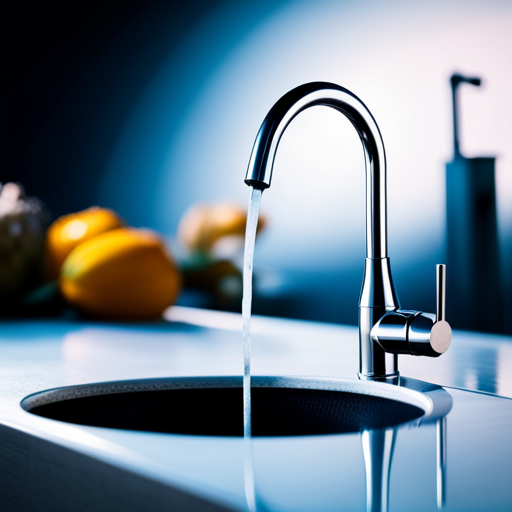Are you tired of constantly hearing the sound of your Reverse Osmosis (RO) system draining? It can be frustrating to constantly deal with this issue, especially when you rely on your RO system for clean drinking water.
Fortunately, there are several reasons why your RO system may be constantly draining, and with a little bit of maintenance, you can prevent this from happening.
In this article, we will explore the six main reasons why your RO system may be constantly draining. From low water pressure to malfunctioning valves and damaged components, we will cover it all.
Additionally, we will provide you with tips on how to maintain your RO system to prevent constant draining and ensure its optimal performance.
So, if you are ready to stop the drain and enjoy clean drinking water without any interruptions, keep reading!
Key Takeaways
– The most common reason for constant draining in a reverse osmosis (RO) system is low water pressure.
– Regular maintenance, including annual flow restrictor and filter replacement, can prevent constant draining issues.
– If the RO system isn’t producing any more water or the flow of water from the faucet is much lower than normal, the membrane may need to be replaced.
– Preventative measures such as monitoring water flow, cleaning and flushing the membrane, sanitizing and replacing the membrane, and adding air to the RO storage tank can maintain RO water system performance and avoid constant draining.
RO Drainage Causes
If you’re experiencing constant draining with your RO system, it could be due to a variety of reasons. One of the most common causes is low water pressure. This can occur when the feed water pressure is below the minimum required level for the RO system to operate properly. In such cases, the RO system will keep draining until the pressure is restored to the correct level.
Another possible cause of constant draining is a malfunctioning Auto Shut Off (ASO) valve. The ASO valve is responsible for shutting off the water supply to the RO system once the storage tank is full. If the valve is not functioning properly, it can lead to constant draining.
Common solutions to this issue include replacing the malfunctioning ASO valve or cleaning it to remove any debris that might be obstructing it. Troubleshooting tips for the ASO valve include checking the valve’s wiring and connections to ensure that they’re properly installed and functioning correctly.
RO System Components
To understand the components of your residential RO filtration system, start by identifying the basic components such as the filters, check valve, air bladder, membrane, ASO valve, storage tank, flow restrictor, and drain saddle. These components work together to ensure that your RO system produces clean and safe drinking water. Proper RO system installation and maintenance procedures are crucial to keep these components working effectively.
To ensure that your RO system works efficiently, here are a few maintenance procedures that you should follow. Firstly, replace the filters and flow restrictor annually to prevent clogging and low water pressure. Secondly, check the air bladder regularly to ensure that it’s properly inflated, and replace it if it’s damaged. Thirdly, replace the ASO valve if it’s malfunctioning to prevent constant drainage. Lastly, regularly inspect and maintain the membrane to ensure that it’s producing enough water.
By following these maintenance procedures, you can prevent constant drainage and ensure that your RO system produces clean and safe drinking water.
Preventative Maintenance Tips
Maintaining your residential RO filtration system is crucial to ensure its efficiency and longevity, and here are some preventative maintenance tips to follow.
Start by cleaning the membrane regularly to prevent clogging and ensure that it’s working properly. You can do this by flushing it with a cleaning solution or by soaking it in a cleaning solution for a specified period of time.
Additionally, you should sanitize the RO tank at least once a year to eliminate any bacteria or contaminants that may have accumulated.
Another important tip for preventative maintenance of RO systems is to add air to the RO storage tank on a regular basis. This helps maintain the correct air pressure in the tank, which is important for the RO system to function properly.
Finally, it’s important to replace the filters on a regular basis to ensure that the RO system is producing clean and safe drinking water. By following these simple preventative maintenance tips, you can keep your RO system working effectively and avoid constant draining issues.
Conclusion
Now that you understand the six main reasons why your RO system may be constantly draining, it’s time to take action. By identifying the cause of the issue, you can determine the best solution to stop the drain and ensure your system is working optimally.
Remember to regularly maintain your RO system to prevent future draining issues. This includes replacing filters as recommended, checking for leaks and damaged components, and monitoring water pressure. By staying on top of maintenance, you can enjoy clean and safe drinking water from your RO system for years to come.
